
Arthur Eric Rowton Gill was an English sculptor, letter cutter, typeface designer, and printmaker. Although the Oxford Dictionary of National Biography describes Gill as "the greatest artist-craftsman of the twentieth century: a letter-cutter and type designer of genius", he is also a figure of considerable controversy following the revelations of his sexual abuse of two of his daughters and of his pet dog.
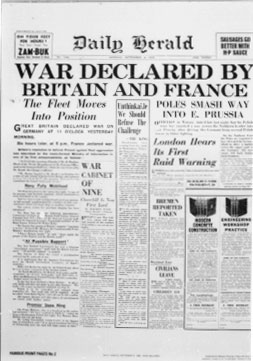
The Daily Herald was a British daily newspaper, published daily in London from 1912 to 1964. It was published in the interest of the labour movement and supported the Labour Party. It underwent several changes of management before ceasing publication in 1964, when it was relaunched as The Sun, in its pre-Murdoch form.
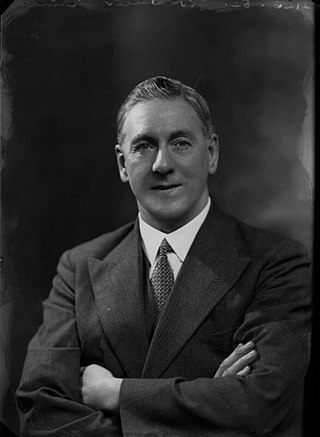
Walter McLennan Citrine, 1st Baron Citrine, was one of the leading British and international trade unionists of the twentieth century and a notable public figure. Yet, apart from his renowned guide to the conduct of meetings, ABC of Chairmanship, he has been little spoken of in the history of the labour movement. More recently, labour historians have begun to re-assess Citrine's role.
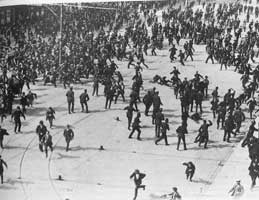
The Dublin lock-out was a major industrial dispute between approximately 20,000 workers and 300 employers that took place in Dublin, Ireland. The dispute, lasting from 26 August 1913 to 18 January 1914, is often viewed as the most severe and significant industrial dispute in Irish history. Central to the dispute was the workers' right to unionise.

John Axon GC was an English train driver from Stockport who died while trying to stop a runaway freight train on a 1 in 58 gradient at Chapel-en-le-Frith in Derbyshire after a brake failure. The train consisted of an ex-LMS Stanier Class 8F 2-8-0 No. 48188 hauling 33 wagons and a brake van.

The 1914 Star, colloquially known as the Mons Star, is a British First World War campaign medal for service in France or Belgium between 5 August and 22 November 1914.
The Guild of St Joseph and St Dominic was a Roman Catholic community of artists and craftspeople founded in 1920 in Ditchling, East Sussex, England. It was part of the Arts and Crafts movement and its legacy led to the creation of the Ditchling Museum of Art + Craft.

The 1948 Queensland railway strike was a strike which lasted nine weeks, from 3 February to 5 April 1948, over wages of workers at railway workshops and locomotive depots in Queensland, Australia.

The Electrical, Electronic, Telecommunications and Plumbing Union, known as the EETPU, was a British trade union formed in 1968 as a union for electricians and plumbers, which went through three mergers from 1992 to now be part of Unite the Union.
Trade unions in Ghana first emerged in the 1920s and have played an important role in the country's economy and politics ever since.
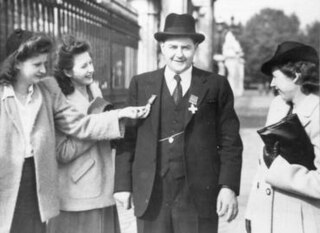
Benjamin Gimbert, an engine driver with the London and North Eastern Railway (LNER), was awarded the George Cross and the Order of Industrial Heroism, as was his fireman James Nightall, whose award was posthumous, for saving an ammunition train from a fire on 2 June 1944 during the Soham rail disaster.
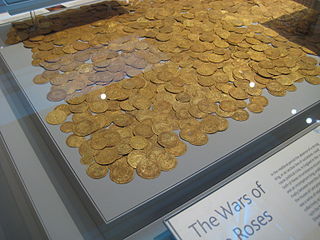
The British Museum Department of Coins and Medals is a department of the British Museum involving the collection, research and exhibition of numismatics, and comprising the largest library of numismatic artefacts in the United Kingdom, including almost one million coins, medals, tokens and other related objects. The collection spans the history of coinage from its origins in the 7th century BC to the present day, and is representative of both Eastern and Western numismatic traditions.
Ken Gill was a British trade union leader. He was the General Secretary of the Technical, Administrative and Supervisory Section (TASS), from 1974 to 1988, when it merged with ASTMS to form the Manufacturing, Science and Finance Union (MSF). He was General Secretary of the MSF, 1988–1992, initially jointly with Clive Jenkins. A committed Communist, he was elected to the TUC General Council in 1974, and was a prominent figure in the militant industrial relations of the 1970s. From 1981 to 1987 he was a member of the Commission for Racial Equality.

The British Worker was a newspaper produced by the General Council of the Trades Union Congress for the duration of the 1926 United Kingdom General Strike. The first of eleven issues was printed on 5 May and publication stopped on 17 May after the official cessation of the strike. The principal objective of the newspaper was to circulate information and maintain the strikers' morale throughout the stoppage.

Joe Cribb is a numismatist, specialising in Asian coinages, and in particular on coins of the Kushan Empire. His catalogues of Chinese silver currency ingots, and of ritual coins of Southeast Asia were the first detailed works on these subjects in English. With David Jongeward he published a catalogue of Kushan, Kushano-Sasanian and Kidarite Hun coins in the American Numismatic Society New York in 2015. In 2021 he was appointed Adjunct Professor of Numismatics at Hebei Normal University, China.

The Trades Union Congress (TUC) is a national trade union centre, a federation of trade unions that collectively represent most unionised workers in England and Wales. There are 48 affiliated unions with a total of about 5.5 million members. Paul Nowak is the TUC's current General Secretary, serving from January 2023.
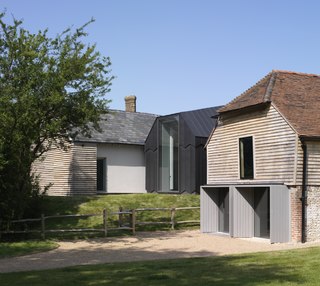
Ditchling Museum of Art + Craft is located in Ditchling, East Sussex, England. It specialises in showcasing the artists and craftspeople who made Ditchling a creative hub in the 20th century, such as Eric Gill, the sculptor, printmaker and typeface designer, Edward Johnston, designer of the London Underground font, and printer Hilary Pepler. These artisans were associated with The Guild of St Joseph and St Dominic, an offshoot of the Arts and Crafts movement.
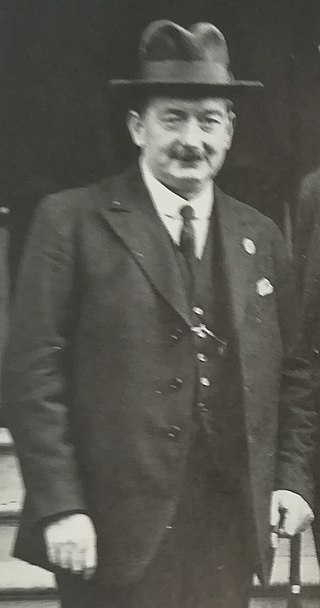
Joseph Patrick Cotter was a British trade union leader.




















